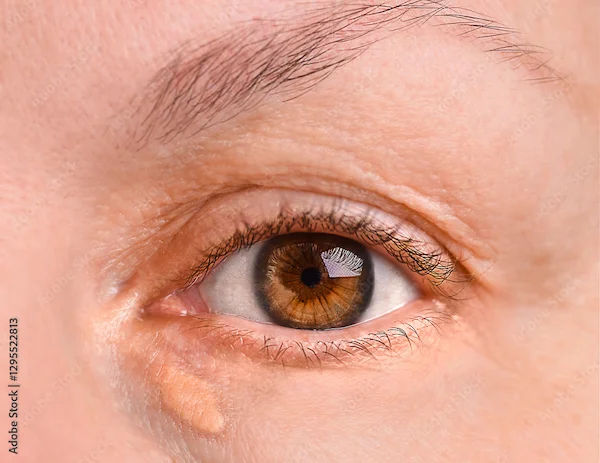What Leads To Signs Of Cor Pulmonale Disease And Diagnosis
Explore the causes, symptoms, and diagnostic methods for cor pulmonale, a serious heart condition linked to lung disease.

Written by Dr. Siri Nallapu
Reviewed by Dr. Shaik Abdul Kalam MD (Physician)
Last updated on 3rd Oct, 2025

Introduction
Have you ever felt unusually short of breath after a simple activity, or noticed swelling in your ankles that doesn’t go away? While these can be signs of various issues, they might also point to a condition where a lung problem starts to affect your heart. This condition is known as cor pulmonale. It’s not a disease itself, but a serious complication that arises from long-term pressure overload on the right side of the heart, almost always due to an underlying lung disorder. Understanding what leads to cor pulmonale disease is crucial because early recognition can lead to better management of the root cause. This article will guide you through the essentials: what cor pulmonale is, the diseases that cause it, the signs and symptoms to watch for, and the detailed process of how doctors reach a diagnosis. Our goal is to empower you with knowledge, so you can have more informed conversations with your healthcare provider.
What exactly is Cor Pulmonale? A Simple Explanation
At its core, cor pulmonale is a condition that causes the right ventricle of your heart to enlarge and eventually fail. The term itself is Latin for "pulmonary heart," which perfectly describes the problem: an issue in the lungs (pulmonary) leads to a problem in the heart.
The Heart-Lung Connection: Why Your Lungs Affect Your Heart
Think of your heart and lungs as a tightly coupled team. The right side of your heart has one main job: to pump blood that is low in oxygen into the lungs, where it picks up fresh oxygen. For this to happen easily, the blood vessels in your lungs need to be relaxed and open. However, when you have certain chronic lung diseases, these lung blood vessels can become constricted or damaged. This creates high blood pressure specifically in the arteries going to your lungs, a condition known as pulmonary hypertension. The right ventricle now has to work much harder, like trying to pump through a narrow, stiff hose instead of a wide, flexible one. Over time, this constant strain causes the heart muscle to thicken and enlarge (a state called hypertrophy), leading to cor pulmonale.
Cor Pulmonale vs. Other Heart Failure: What's the Difference?
It's important to distinguish cor pulmonale from the more commonly discussed left-sided heart failure. Left-sided failure often results from conditions like coronary artery disease or high blood pressure affecting the entire body (systemic hypertension). It typically leads to fluid buildup in the lungs. Cor pulmonale, on the other hand, is right-sided heart failure specifically caused by lung disease or low oxygen levels. The primary problem starts in the lungs, and the heart is the secondary victim.
Consult a Cardiologist for the best advice
The Root Causes: What Leads to Cor Pulmonale
Cor pulmonale doesn't develop in isolation. It is always a consequence of another condition that causes pulmonary hypertension. Identifying the underlying cause is the first and most critical step in management.
Chronic Lung Diseases: The Most Common Culprits
The vast majority of cor pulmonale cases are linked to chronic diseases that damage the lung tissue or airways.
COPD and Emphysema: A Primary Link
Chronic Obstructive Pulmonary Disease (COPD), which includes emphysema and chronic bronchitis, is the leading cause of cor pulmonale. In COPD, the air sacs in the lungs are destroyed, and the airways are inflamed. This not only traps air but also destroys the tiny capillaries that surround the air sacs where oxygen exchange happens. With fewer blood vessels, the resistance in the remaining ones increases, leading to pulmonary hypertension. It's estimated that pulmonary hypertension develops in roughly 30-50% of patients with advanced COPD, making them highly susceptible to cor pulmonale.
The Role of Pulmonary Fibrosis
Diseases like idiopathic pulmonary fibrosis (IPF) cause scarring (fibrosis) of the lung tissue. This stiffens the lungs, making it hard to breathe and also squeezing and destroying the pulmonary blood vessels. The scarring directly increases pressure in the lung arteries, placing a significant burden on the right heart.
Sleep-Disordered Breathing: The Nighttime Danger
Conditions that affect breathing during sleep are a major, and often underdiagnosed, cause of cor pulmonale.
Obstructive Sleep Apnoea (OSA) and Cor Pulmonale
In OSA, the airway repeatedly collapses during sleep, causing pauses in breathing (apnoeas) and drops in blood oxygen levels. These recurrent episodes of low oxygen cause the pulmonary arteries to constrict. Over many years, this can lead to chronic pulmonary hypertension and subsequently, cor pulmonale. The insidious nature of OSA means the heart strain happens night after night, often without the person being aware.
Other Contributing Factors
Other conditions that can lead to cor pulmonale include:
- Chronic blood clots in the lungs (pulmonary emboli)
- Kyphoscoliosis (a severe curvature of the spine that restricts lung expansion)
- Living at high altitudes for prolonged periods (due to chronic low oxygen)
Recognising the Signs and Symptoms of Cor Pulmonale
The symptoms of cor pulmonale often overlap with those of the underlying lung disease, which can make it tricky to identify. However, certain signs point specifically to right heart strain.
Early Warning Signs You Might Miss
In the beginning, symptoms may be subtle and attributed to just "getting older" or the lung condition itself.
- Increasing Shortness of Breath (Dyspnoea): This is the most common symptom. Initially, it may only occur during
physical activity but worsens over time. - Unexplained Fatigue and Weakness: As the heart struggles to pump efficiently, the body's organs and muscles don't get
enough oxygen-rich blood, leading to persistent tiredness.
Progressive Symptoms as the Condition Worsens
As the right heart failure becomes more pronounced, symptoms related to fluid buildup (oedema) appear.
- Swelling (Ooedema) in the Lower Extremities: This is a classic sign. You may notice swelling in your ankles, feet, and legs that pits when you press on it. This happens because the failing right heart can't effectively pump blood forward, causing it to back up in the veins, forcing fluid into the tissues.
- A Persistent Cough and Wheezing.
Signs of Advanced Disease
In severe cases, the following may occur:
- Bluish Discoloration of Lips and Skin (Cyanosis): Due to severely low oxygen levels in the blood.
- A Feeling of Fullness or Pulsation in the Neck: This is caused by distended neck veins (jugular venous distension) as
blood backs up from the heart. - Enlarged, Tender Liver: Due to congestion of the abdominal organs.
If you have a known lung condition like COPD and notice a significant increase in shortness of breath or new swelling
in your legs, it is essential to consult a doctor.
How Doctors Diagnose Cor Pulmonale: A Step-by-Step Guide
Diagnosing cor pulmonale involves piecing together information from your symptoms, a physical exam, and specific tests to confirm both the heart abnormality and its underlying pulmonary cause.
The Initial Consultation: Physical Exam and Medical History
Your doctor will ask detailed questions about your breathing, smoking history, sleep habits, and overall health. During
the physical exam, they will listen to your heart and lungs carefully. They will specifically check for:
- A loud pulmonic valve sound (P2): indicating high pressure in the lungs.
- A heart murmur from tricuspid valve leakage.
- Jugular Venous Distension (JVD): visible bulging neck veins.
- Hepatomegaly: an enlarged liver.
- Lower extremity oedema: swelling in the legs and ankles.
Key Diagnostic Tests and What They Show
Several tests are crucial for confirming the diagnosis.
Imaging: Echocardiogram and Chest X-Ray
An echocardiogram (an ultrasound of the heart) is the most important non-invasive test. It allows doctors to see the size and function of the right ventricle, estimate the pressure in the pulmonary arteries, and check how well the heart is pumping. A chest X-ray may show an enlarged right ventricle and prominent pulmonary arteries.
Lung Function Tests (Spirometry)
These breathing tests are essential to diagnose and assess the severity of the underlying lung disease, such as COPD or pulmonary fibrosis.
The Gold Standard: Right Heart Catheterisation
While an echocardiogram provides an estimate, right heart catheterisation is the most accurate way to measure the blood pressure inside the pulmonary arteries directly. A thin tube (catheter) is threaded through a vein into the right side of the heart and into the pulmonary artery. This test definitively confirms pulmonary hypertension.
Other tests may include an arterial blood gas (to measure oxygen levels), a CT scan of the chest, and a sleep study
(polysomnography) if sleep apnoea is suspected.
Conclusion
Understanding cor pulmonale is understanding a vital domino effect within your body: a chronic lung condition can lead to high pressure in your lung arteries, which in turn places a severe strain on your heart. Recognising the signs of cor pulmonale disease, such as progressive shortness of breath and leg swelling, especially if you have a history of COPD or sleep apnoea, is a critical step toward seeking timely help. The diagnosis process is thorough, designed not just to confirm the heart's involvement but, more importantly, to pinpoint the exact lung issue at the root of the problem. While cor pulmonale is a serious condition, early and aggressive management of the underlying cause, be it with medication, oxygen therapy, or CPAP for sleep apnoea, can significantly improve symptoms, quality of life, and slow the progression of the disease. If any of the symptoms discussed resonate with you, do not hesitate to take action.
Consult a Cardiologist for the best advice
Consult a Cardiologist for the best advice

Dr. Tripti Deb
Cardiologist
40 Years • MBBS, MD, DM, FACC, FESC
Hyderabad
Apollo Hospitals Jubilee Hills, Hyderabad

Dr. Zulkarnain
General Physician
2 Years • MBBS, PGDM, FFM
Bengaluru
PRESTIGE SHANTHINIKETAN - SOCIETY CLINIC, Bengaluru

Dr. Janjirala Seshivardhan
Cardiologist
7 Years • MBBS,DNB(GM),DM(Cardiology)
Manikonda Jagir
Apollo Clinic, Manikonda, Manikonda Jagir

Dr Nazneen Khan
Cardiologist
7 Years • M.B.B.S, M.D (MEDICINE), DrNB CARDIOLOGY
Pune
Apollo Clinic, Viman Nagar, Pune

Dr. E Prabhakar Sastry
General Physician/ Internal Medicine Specialist
40 Years • MD(Internal Medicine)
Manikonda Jagir
Apollo Clinic, Manikonda, Manikonda Jagir
(150+ Patients)
Consult a Cardiologist for the best advice

Dr. Tripti Deb
Cardiologist
40 Years • MBBS, MD, DM, FACC, FESC
Hyderabad
Apollo Hospitals Jubilee Hills, Hyderabad

Dr. Zulkarnain
General Physician
2 Years • MBBS, PGDM, FFM
Bengaluru
PRESTIGE SHANTHINIKETAN - SOCIETY CLINIC, Bengaluru

Dr. Janjirala Seshivardhan
Cardiologist
7 Years • MBBS,DNB(GM),DM(Cardiology)
Manikonda Jagir
Apollo Clinic, Manikonda, Manikonda Jagir

Dr Nazneen Khan
Cardiologist
7 Years • M.B.B.S, M.D (MEDICINE), DrNB CARDIOLOGY
Pune
Apollo Clinic, Viman Nagar, Pune

Dr. E Prabhakar Sastry
General Physician/ Internal Medicine Specialist
40 Years • MD(Internal Medicine)
Manikonda Jagir
Apollo Clinic, Manikonda, Manikonda Jagir
(150+ Patients)
More articles from General Medical Consultation
Frequently Asked Questions
1. Is cor pulmonale reversible?
In some cases, yes. If the underlying cause of pulmonary hypertension is treatable (for example, with effective CPAP therapy for sleep apnoea or anticoagulants for chronic blood clots), the strain on the heart can be reduced, and the cor pulmonale may improve or even reverse. However, in cases of irreversible lung damage like advanced COPD, the goal shifts to management and preventing further worsening.
2. What is the life expectancy for someone diagnosed with cor pulmonale?
Life expectancy varies greatly and depends almost entirely on the severity and treatability of the underlying lung disease. With proper management of conditions like COPD or sleep apnoea, many people can live for years with a good quality of life. Early diagnosis and consistent treatment are the most important factors.
3. How is cor pulmonale treated?
Treatment focuses on the root cause. This includes:
- Oxygen therapy to increase low blood oxygen levels.
- Medications like diuretics to reduce fluid buildup, and bronchodilators for COPD.
- CPAP or BiPAP machines for sleep apnoea.
- In some cases, specific medications for pulmonary hypertension may be used.
4. Can you have left-sided and right-sided heart failure at the same time?
Yes, this is possible and is known as biventricular failure. For instance, a person with long-standing systemic high blood pressure might develop left-sided failure, which can eventually lead to right-sided failure. Alternatively, a person with cor pulmonale (right-sided) could independently develop left-sided issues.
5. Are the symptoms of cor pulmonale different in men and women?
The core symptoms (shortness of breath, oedema) are the same. However, the underlying causes may have gender variations. For example, certain types of pulmonary hypertension are more common in women, while COPD has historically been more prevalent in men, though this gap is closing.




